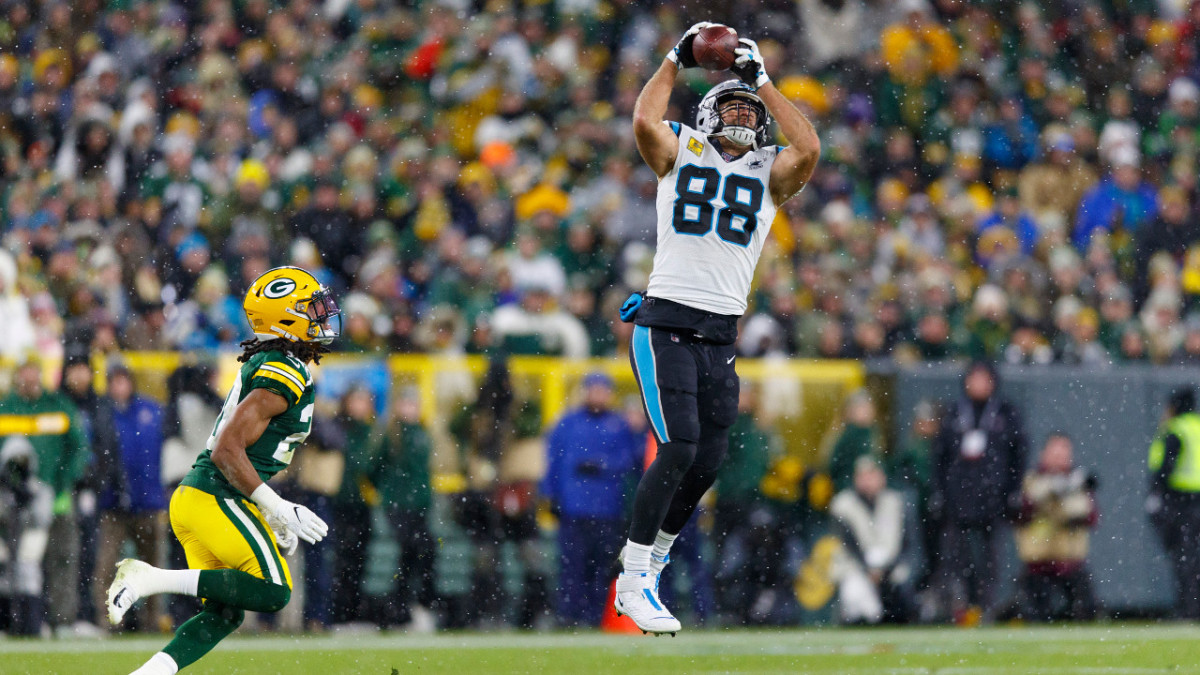Backs, Tight Ends Torture Packers’ Pass Defense

The biggest problem confronting Mike Pettine’s Green Bay Packers defense might not be stopping the run. Rather, it should be slowing the bleeding from the incessant receptions allowed to opposing running backs and tight ends.
Heading into this week’s games, the Packers have allowed 59 receptions for 421 yards and one touchdown to opposing running backs. That’s the fourth-most receptions in the league, though the yardage total is a manageable 15th. More pressing are the 57 receptions for 627 yards and five touchdowns by opposing tight ends. Green Bay has allowed the sixth-most receptions, third-most yards and fourth-most touchdowns to tight ends.
“It’s a variety of things,” Pettine said on Tuesday. “Sometimes, it’s been personnel. Sometimes, it’s been our focus is elsewhere and they’ve called the right play. We’re looking to stay on top or take away the deep ball or we’re defending the run, and it’s a play pass and they hit the tight end down the field. Other times, it’s been our technique. Our help’s inside, we’re supposed to be outside leverage and we get beat across our face. It’s never one thing.”
In Sunday’s win against Carolina, the damage mirrored the season-long numbers. While MVP candidate Christian McCaffrey caught six passes, he turned those into only 33 yards. However, veteran tight end Greg Olsen tore the defense to shreds with eight catches for 98 yards. It was a season-high total for receptions and second-most yards of the season.
For Pettine, the goal of limiting McCaffrey, who had a receiving touchdown in three of the previous four games, was hit. However, Olsen and receiver D.J. Moore (nine receptions, 120 yards) went off as a consequence.
“I thought we did a pretty good job against McCaffrey, looking what he had done to some other teams during the year, and I think maybe that affected us on some of the down-the-field throws,” Pettine said. “We wanted to make sure we had him bracketed underneath, because so many times he’s caught a 4-yard pass and turned it into a chunk play. You’re always playing that game of, ‘If we feel good about leaving the back alone, then we can double guys downfield.’ We just never really felt comfortable doing that the other night.”
The Packers’ closing schedule includes some tough matchups. For San Francisco after the bye, it’s George Kittle, who is the most dangerous tight end in the game. After that, it’s Giants running back Saquon Barkley, who might rival McCaffrey as a passing game weapon. In Week 15, it’s a return matchup against Chicago running back Tarik Cohen. Then, it’s Minnesota running back Dalvin Cook and tight end Kyle Rudolph. Finally, in the finale, it’s Detroit rookie tight end T.J. Hockenson.
From defensive backs coach Jason Simmons’ perspective, the solution is obvious.
“Any time, at any position, you’ve got to cover them better,” he said. “It’s pretty simple.”
Simple in words but how about action? What has to be done? It starts with communication, coach Matt LaFleur said. From there, it’s the fundamentals that have been preached for months but haven’t shown up with regularity.
“If you’re in zone coverage, you’ve got to make sure that you get good drops and have good vision so that you can cover them a later in the down,” inside linebackers coach Kirk Olivadotti said. “In man coverage, you’ve got to make sure you’re playing your leverage. Those are the things that are important whether you’re in man or zone coverage.”
Blake Martinez, the team’s every-down inside linebacker, has allowed 35 completions in 40 targets, according to Pro Football Focus, and hasn’t broken up a pass all season. However, in terms of receptions and yards allowed per coverage snap, he’s actually significantly above average, according to PFF.
“It’s never one guy and, when we study it, it’s usually a variety of things because if it was any one thing, we would make that correction, and if it was something schematically, we would change it,” Pettine said. “If it was personnel-wise, we’d find a way to work around it and get it right. It’s a lot of little things, and there’s some good tights in this league. We obviously want to defend everybody, but sometimes we’ve got to put more resources outside or put more resources on the back, and that’s led to some tight ends making some plays against us. There are times when we’ve done a good job covering them and the quarterback’s made a throw and they made the play.”





